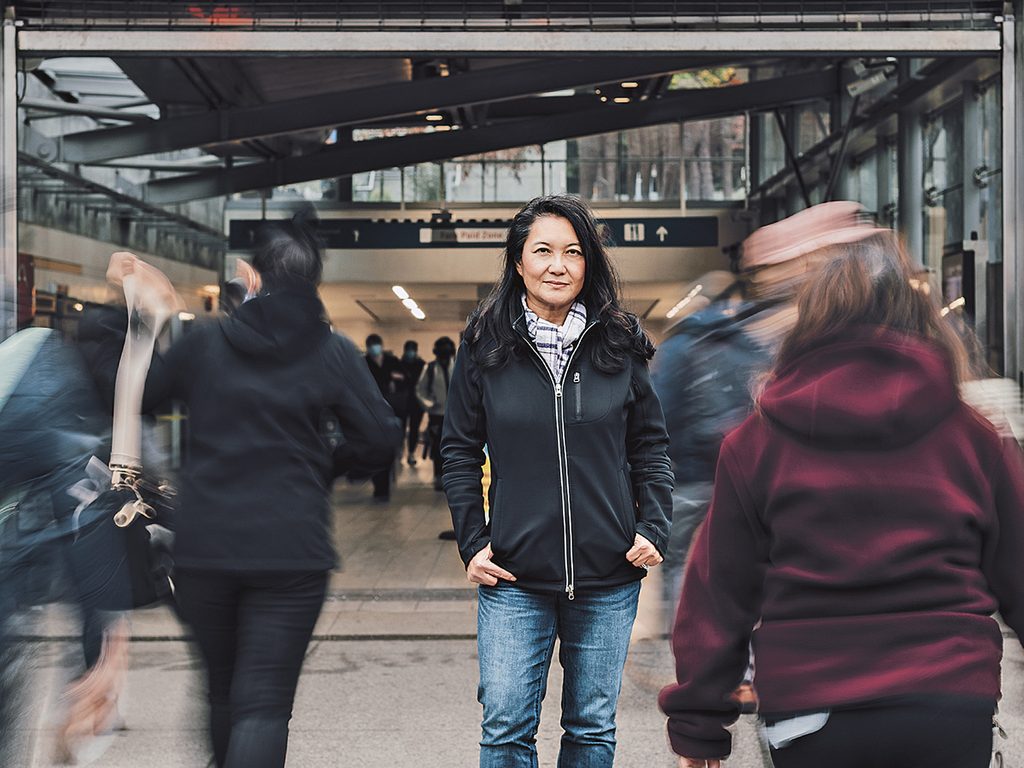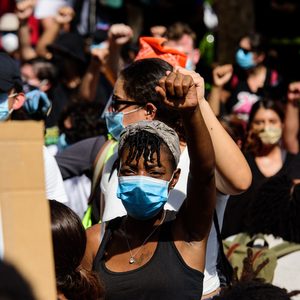How Asian Canadians Are Fighting Racism During the Pandemic

As cases of COVID-19 rose in Canada, so did anti-Asian racism. Here's how community groups are creating space for people to speak up.
In the early months of the pandemic, Barbara Lee was more afraid of racism than she was of COVID-19. In March, the 53-year-old Vancouver filmmaker learned that a white man had yelled racially charged remarks at a 92-year-old Asian man in a local convenience store. The attacker then dragged the older man outside and pushed him to the ground, where he hit his head. Police later laid assault charges. During a family outing a month later, an older white woman angrily approached Lee’s own 12-year-old daughter and, speaking of the virus, asked her, “Well, where do you think it came from?”
Such incidents have become all-too common since COVID-19 first emerged in Wuhan, China. Politicians and media outlets around the world have repeatedly used racist language such as “kung flu” and “Chinese virus” to describe the disease, fuelling the stigmatization that a certain group—Asian people, and specifically anyone of Chinese descent—is to blame for the pandemic. The Angus Reid Institute found that almost a third of Chinese-Canadians had been made to feel like they pose a health threat.
By April, Lee had had enough. As the founder of the Vancouver Asian Film Festival, she decided to use her connections with the community to fight anti-Asian discrimination. Together with a local community advocacy group project 1907, they launched Elimin8hate, an online reporting platform and campaign that encourages victims and witnesses to submit anonymous reports.
Lee believes that creating a space for people to come forward is a powerful first step toward eliminating discrimination. “Representation—being seen and heard—is one of the most effective tools to combat racism,” says Lee. A background making documentaries, she adds, has taught her how sharing stories can help dispel stereotypes and encourage a better understanding of different cultures. And she wasn’t alone in this thinking.
A few thousand kilometres away in Toronto, the local chapter of the Chinese Canadian National Council launched a similar self-reporting site in May. Last fall, the organizations joined forces and combined their data. The results paint a disturbing country-wide picture. Over 600 incidents were reported from seven provinces. Verbal harassment was present in 65 per cent of all reports.
Lee hopes the data will prompt difficult conversations across the country. She’s encouraged that, in the fall, the group received funding from both Simon Fraser University and Canadian Heritage, and is now training facilitators to lead anti-Asian racism education for governmental institutions and corporations across the country.
Connie Lee, who works for the City of Toronto, adds that simply speaking out can be an empowering act. She was one of the 600 people who filed a report through the websites. (She and Barbara are not related.) The 31-year-old was waiting in line at her neighbourhood grocery store in July when a man cut in front and started swearing at her. Then he told her to “go back to the barn.” She stepped away, scared that the encounter with the man—who wasn’t wearing a mask—would turn physical. Afterwards, she began to avoid the store. Lee submitted her online report a few weeks later, which she said helped to put the attack behind her.
Today she hopes that sharing her experience can encourage others who’ve had similar encounters to break their silence. What comes after is the responsibility of all Canadians: listening. “As a community, we have to support those who are speaking out,” says Barbara. “We have to acknowledge them, give them empathy and tell them that they’re not alone.”
Next, read this personal essay on dealing with anti-Asian racism during the COVID-19 pandemic.






